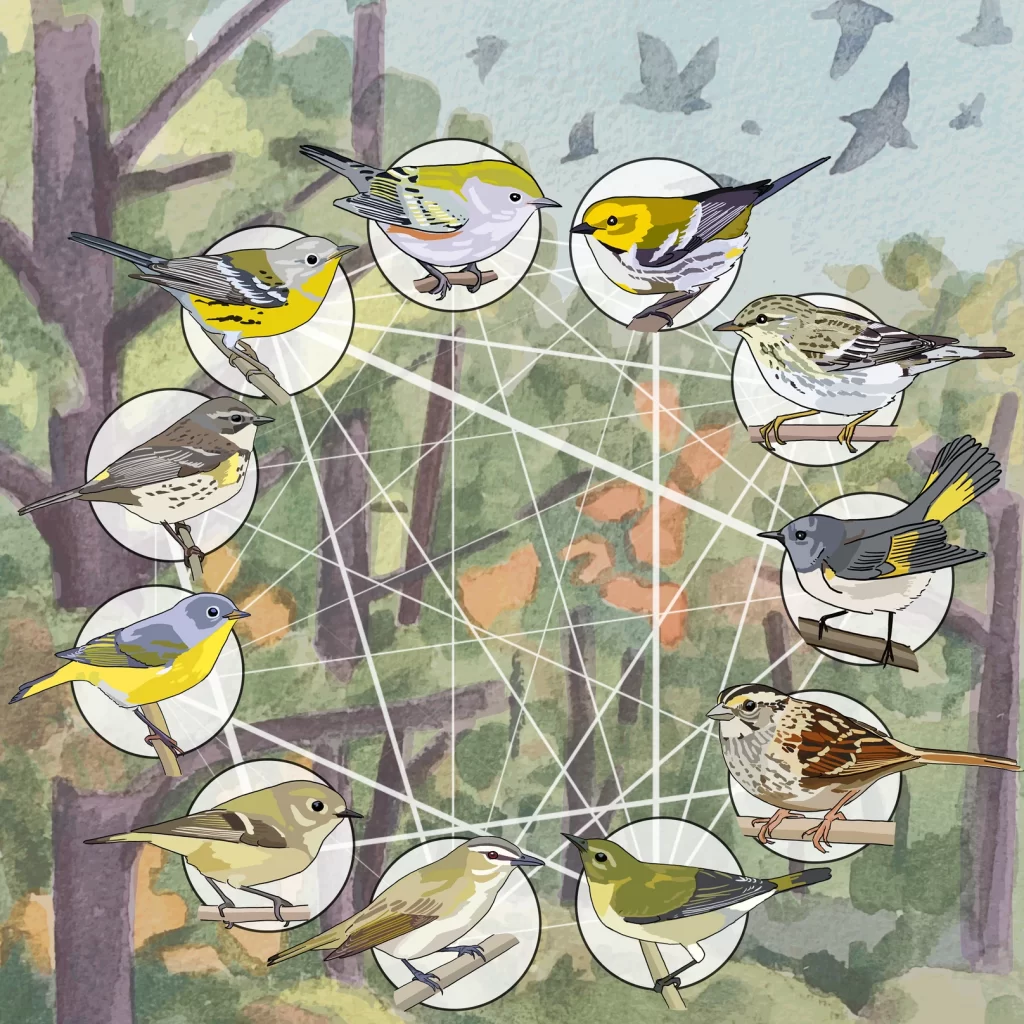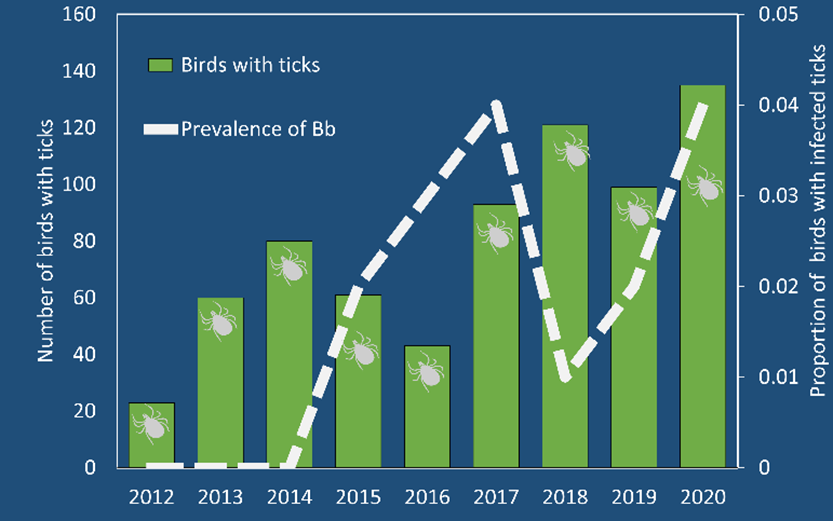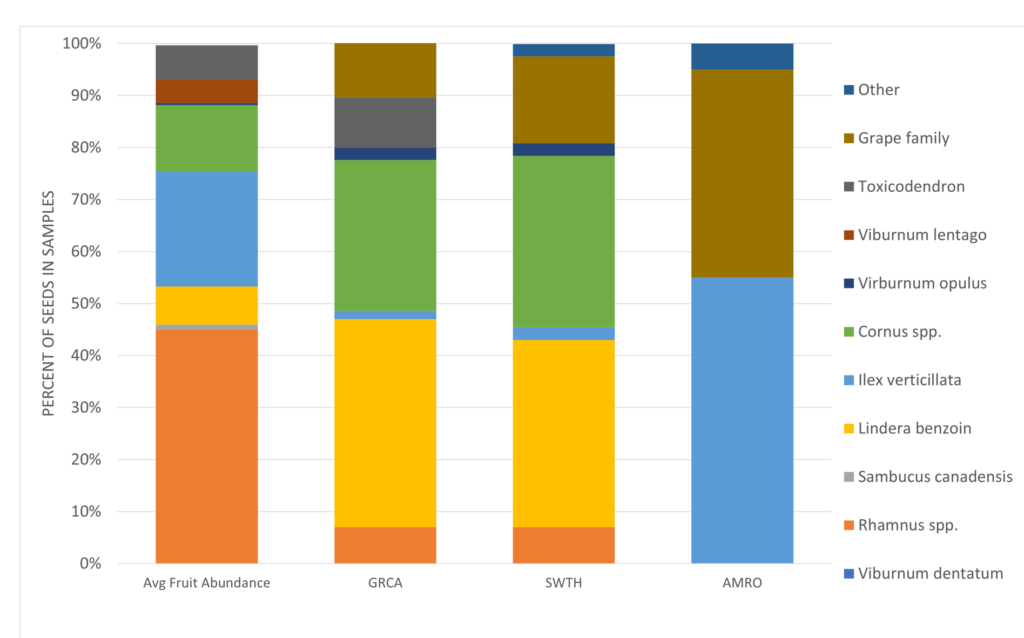We have several ongoing long-term longitudinal studies at our Burke Lake Banding Station as well as projects in external and internal collaborators.
** We frequently have opportunities for undergraduate independent study projects or joining ongoing studies. If interested in pursuing research with MSBO, please email Dr. Jen Owen at owenj@msu.edu.
External collaborators – it our goal that the long-term data we are collecting can be used by other research studies and we are interested in building more collaborations with external partners. If you are interested in our data and/or would like to discuss potential collaborative projects please reach out to Dr. Jen Owen (owenj@msu.edu).
In the news!
Dr. Joely Desimone, a post-doctoral associate working with Associate Professor Emily Cohen at University of Maryland used data from several long-term migration stations, including Burke Lake Banding Station, and found some really fascinating results regarding the social networks of birds when they are migrating. The paper came out in the fall and received lots of great press.
J.G. DeSimone, L.W. DeGroote, S.A. MacKenzie, J.C. Owen, A.J. Patterson,& E.B. Cohen. Persistent species relationships characterize migrating bird communities across stopover sites and seasons, Proc. Natl. Acad. Sci. U.S.A. 121 (34) e2322063121, https://doi.org/10.1073/pnas.2322063121 (2024).
National Audubon Society – https://www.audubon.org/magazine/new-study-reveals-migration-isnt-solo-affair-its-social-event-season

Ongoing and Past projects
Importance of fruit-bearing shrubs on health of migratory landbirds.
Fruits are an important food source for landbirds during fall migration, including for those birds that are primarily insectivores at other times of their annual cycle. However, the nutrient content of fruits vary widely in lipid, protein, and carbohydrate content. Yushi Oguchi, a master’s student in Department of Fisheries and Wildlife studied the diet, health and movement ecology of birds in two different habitat types at the Burke Lake Banding Station (funded by USFWS Avian Health and Disease Program and in collaboration with Dr. Rob Smith at University of Scranton). The native-dominated site is the location of the BULA station today and is a primarily native-dominated habitat, composed of many native fruit-bearing shrubs such as common spicebush, dogwood species, common winterberry, and common elderberry. During the study, we had an additional nearby site with mist-nets in habitat dominated by non-native fruit-bearing shrubs including autumn olive, multifloral rose, Japanese honeysuckle species, and common buckthorn. With equal mist-netting effort in both locations Yushi studied landbird migrants’, (1) energetic condition, i.e. plasma metabolite profile and mass change, (2) movement and stopover length, and (3) immunological condition, in relation to habitat use and diet. The two focal species for the project were Swainson’s Thrush and Gray Catbird.
Two publications came from this research and can be downloaded by the links below.
Migrating birds and movement of ticks
We frequently find ticks on birds and when we first started banding in 2011, the two most common ticks were Ixodes dentatus and Haemaphysalis leporispalustris (rabbit tick). Yet, in the last 10 years we have observed an increase in the number of birds infested with the Ixodes scapularis or black-legged tick (graph below). I. scapularis is the primary vector for Borrelia burgdorferi, the bacteria that causes Lyme Disease. We have run some initial testing on some of the I. scapularis and found Borrelia burgdorferi positive ticks on birds every year since 2015. Bird species with infected ticks include White-throated Sparrow, Swainson’s Thrush, Swamp Sparrow, Song Sparrow, Common Yellowthroat, Veery, American Redstart, and Gray-cheeked Thrush. The increase in prevalence of infected ticks, particularly on breeding birds at our study sites is consistent with regional patterns. https://bit.ly/lymerisk.

Undergraduate student Alexis Litts has been working with the ticks collected from birds and presented her results at the Corey Marsh Ecological Research Center Symposium in the fall 2024 and at the MSU UURAF in spring 2024, where she won first place for her presentation entitled “The role of migrating birds in shifting tick trends and Lyme disease risk over time”.!

Diet of frugivorous landbirds during stopover in relation to what is available.
We have continued to collect fecal samples from birds every fall since 2011 to assess the birds’ diet. In addition, we have done vegetation sampling to determine plant composition in the habitat, and we do weekly fruit counts through the autumn to measure fruit availability. We have been using fecal color to determine the species of fruit consumed. Additionally we use any seeds collected from captured birds.




Two undergraduate students Amelia Cole and Zak Spodek worked with Dr. Kim Scribner and Jeannette Kanefsky to do genetic validation of our ID method for matching color of samples to fruit species consumed. . We performed genetic analysis on fecal samples from frugivorous birds to test this relationship. During the fall of 2020, 74 fecal samples from the American Robin, Gray Catbird, Swainson’s Thrush, Hermit Thrush, and Gray-cheeked Thrush were collected on Whatman cardstock at a fall migration station in Bath, Michigan. Following DNA extraction from each sample, the rbCL chloroplast gene was amplified via PCR, sequences were generated using Sanger sequencing, and are being analyzed using the BLAST tool on the NCBI database.
We have found that our characterization of diet by fecal color and seeds is fairly accurate except for buckthorn. We were attributing colors to buckthorn fruit that were more often dogwood species.
